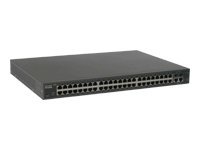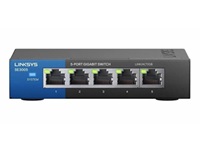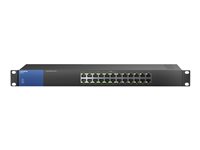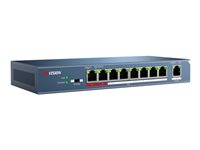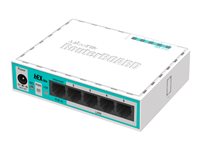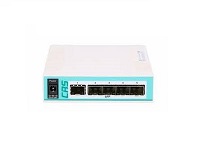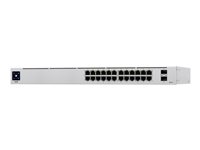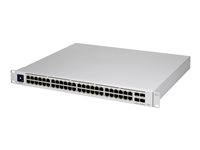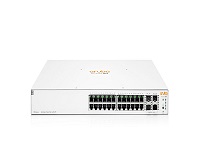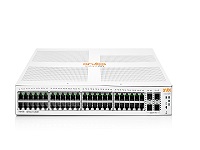Product description
The DES-1250G features forty-eight 10/100 ports and two Combo SFP ports that deliver 13.6Gbps of non-blocking, full-speed packet forwarding. All ports feature automatic speed and full/half-duplex sensing plus Auto MDI/MDI-X crossover cable-type detection. Key management features include performance monitoring, port configuration, VLAN for traffic control, port trunking for increased bandwidth and Class of Service (CoS) for traffic prioritization. An intuitive, web-browser interface and Auto Discovery Utility offers simple switch management.
Product features
- High Density With 48 10/100Mbps Ports
The switch provides 48 10/100Mbps ports in a low-profile rackmountable housing. These ports support auto-sensing and autonegotiation of network speeds and full/half duplex for connection to workstations and print servers, giving each a dedicated bandwidth. All ports support auto MDI/MDIX crossover, allowing you to connect to any node without the need to change your usual straight-through twisted-pair cables. - 2 Combo 1000BASE-T/SFP for Flexible Gigabit Connection
2 combo 1000BASE-T/SFP are provided for flexible copper or fiber Gigabit connection. You can select to install optional transceivers in the SFP slots for short, medium or long-distance fiber backbone attachment. Use of the SFP will disable their corresponding built-in 1000BASE-T connections. - Port Trunks for Aggregated Bandwidths
Ports can be combined together to create multi-link load-sharing aggregated bandwidths to a server or a network backbone. To expand the network, you can also make use of the port trunks to eliminate bottlenecks between the cascaded switches. The switch allows you to combine multiple ports into a trunk, and to create multiple trunks per switch. - VLANs for Enhanced Security & Performance
The switch support VLANs to let you improve security and bandwidth utilization by limiting the broadcast domains and confining intra-group traffic within their segments. To segment up the network, VLAN-supported workstations and servers that are connected to the switch can be grouped into different Virtual LANs (VLANs). - Quality of Service Support
The switch supports Layer 2 802.1p Priority Queue control to prioritize network packets. Classification of users' data priorities can be based on a data packet Priority Queue. This QoS function support allows you to run bandwidth-intensive and delay-sensitive applications and to attach video servers to the switch for videoconference. - Port Mirroring
The switch supports port mirroring to assist network traffic monitoring. The network administrator can use this function as a diagnostic tool or debugging feature, especially when fending off an attack. It enables you to keep close track of switch performance and alter it if necessary. - Network Management/Monitoring
The switch provides easy web-based switch configuration and network management/monitoring from any networked station that does away with the need for consoles and console cables. Network devices are auto-discovered and displayed on a network topology, and you can receive traps of system events and port errors while monitoring the network status and statistics from any workstation.




